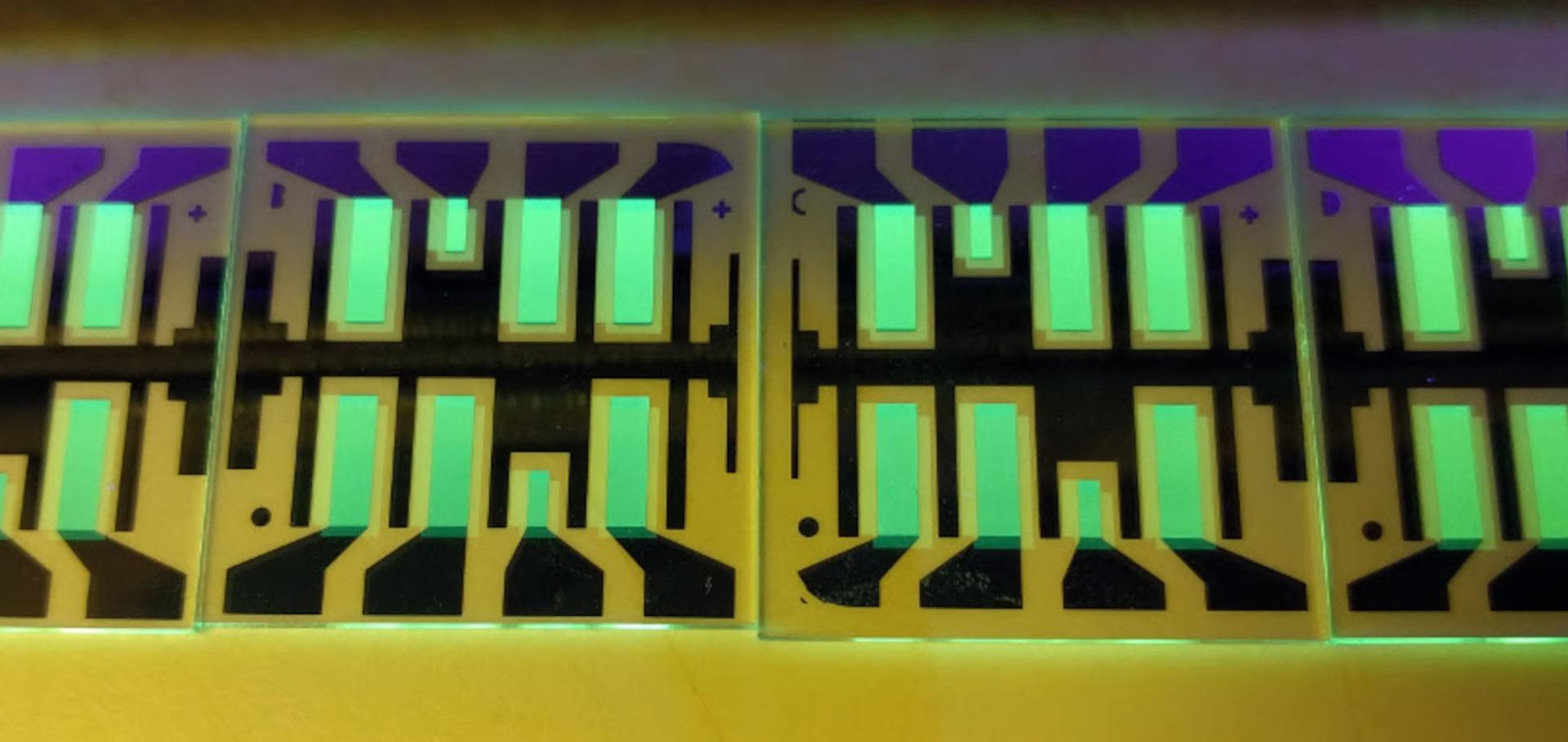Determining doping efficiency and mobility from conductivity and Seebeck data of n-doped C60-layers
Physica Status Solidi (B) Basic Research 252:8 (2015) 1877-1883
Abstract:
© 2015 WILEY-VCH Verlag GmbH & Co. KGaA, Weinheim.In this work, we introduce models for deriving lower limits for the key parameters doping efficiency, charge carrier concentration, and charge carrier mobility from conductivity data of doped organic semiconductors. The models are applied to data of thin layers of Fullerene CA charge carrier transport model for donor-acceptor blend layers
Journal of Applied Physics AIP Publishing 117:4 (2015) 045501
Measurement of Small Molecular Dopant F4TCNQ and C60F36 Diffusion in Organic Bilayer Architectures.
ACS applied materials & interfaces 7:51 (2015) 28420-28428
Abstract:
The diffusion of molecules through and between organic layers is a serious stability concern in organic electronic devices. In this work, the temperature-dependent diffusion of molecular dopants through small molecule hole transport layers is observed. Specifically we investigate bilayer stacks of small molecules used for hole transport (MeO-TPD) and p-type dopants (F4TCNQ and C60F36) used in hole injection layers for organic light emitting diodes and hole collection electrodes for organic photovoltaics. With the use of absorbance spectroscopy, photoluminescence spectroscopy, neutron reflectometry, and near-edge X-ray absorption fine structure spectroscopy, we are able to obtain a comprehensive picture of the diffusion of fluorinated small molecules through MeO-TPD layers. F4TCNQ spontaneously diffuses into the MeO-TPD material even at room temperature, while C60F36, a much bulkier molecule, is shown to have a substantially higher morphological stability. This study highlights that the differences in size/geometry and thermal properties of small molecular dopants can have a significant impact on their diffusion in organic device architectures.Mixed interlayers at the interface between PEDOT:PSS and conjugated polymers provide charge transport control
Journal of Materials Chemistry C Royal Society of Chemistry (RSC) 3:11 (2015) 2664-2676
Optical properties and limiting photocurrent of thin-film perovskite solar cells
Energy and Environmental Science Royal Society of Chemistry 8:2 (2014) 602-609


